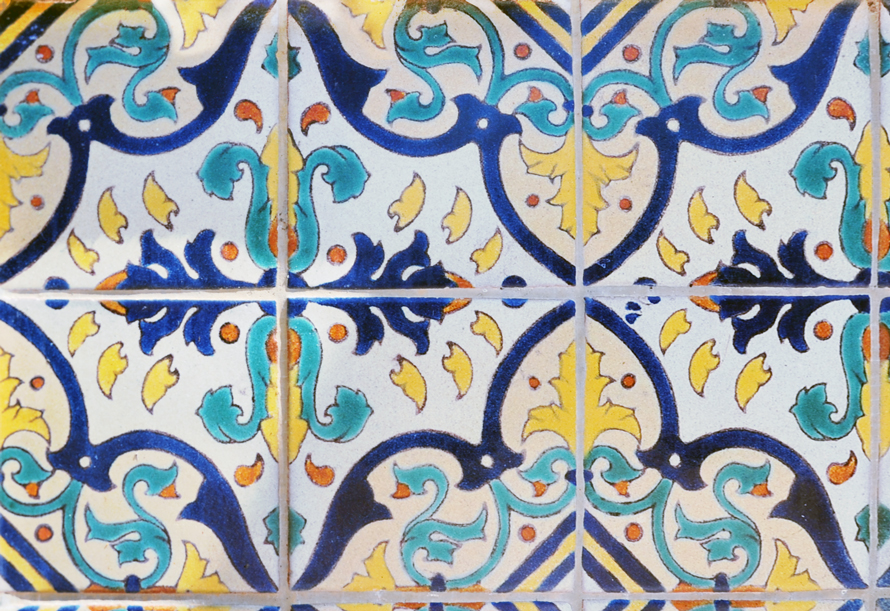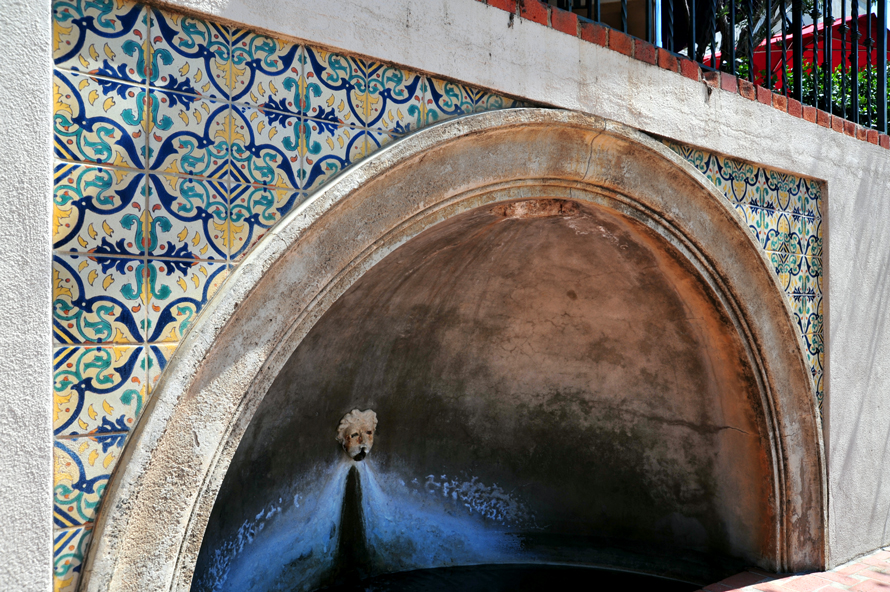 RICHARD REQUA, supervising architect of the 1935 California Pacific International Exposition, said, “One of the noteworthy and characteristic features of Spanish, as well as Spanish Colonial architecture, was their patios and gardens, embellished with fountains and brilliantly decorated tiles. Among these features special mention should be given to the beautiful Casa del Rey Moro Garden—reproduced as faithfully as possible—the finest small garden in all Spain, with its alabaster fountain, grotto, lily pond, quaint old well, seats, and pergolas.”
Original Spanish Revival tiles from the 1935 Exposition are installed above the garden's upper terrace fountain. Davies & McDonald Tile Company (D&M) produced patterned tile in Los Angeles from 1928 until 1939. Their muted colors and satiny surfaces make them easily recognizable as D&M. They decorated terra cotta clay tiles using a wax resist method called cuerda seca (Spanish for “dry cord”). After delineating patterns with colored wax or grease lines, they flooded the tile surface with liquid glaze, leaving thin bands, or dry cords, unglazed and colors separated.
Between 1928 and 1939, John Davies and John McDonald were the proprietors of D&M Tile in Los Angeles. Although little is known about McDonald, Davies, originally from Wales, may have received training as a ceramicist at Doulton China in London in the early 1900s. Around 1910, he immigrated to the United States and gradually made his way to California, gaining experience at various tile companies across the country. In the late 1910s or early 1920s, Davies became a superintendent at the Lincoln Heights plant of Pacific Clay Products. In 1927, he departed Pacific Clay to establish his own tile production company, D&M.
(Click on images to view larger)
|


